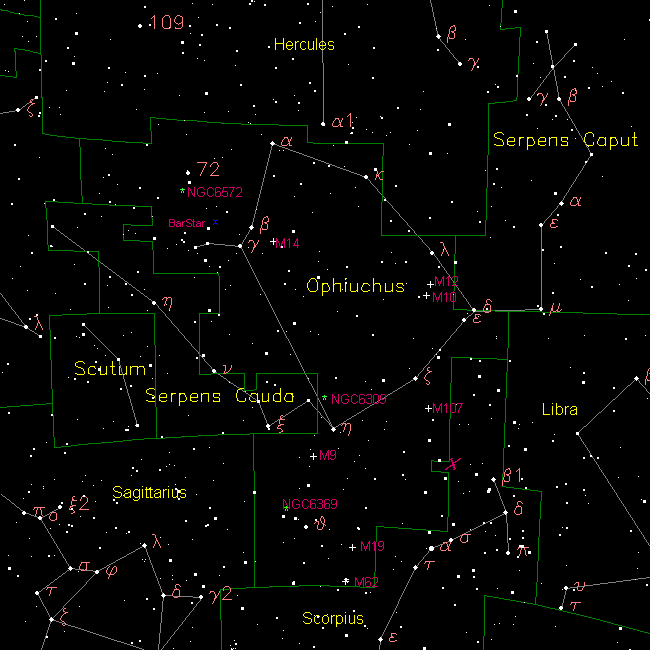Science
Related: About this forumThe Draco Constellation
DECEMBER 7, 2018 BY MATT WILLIAMS
In the 2nd century CE, Greek-Egyptian astronomer Claudius Ptolemaeus (aka. Ptolemy) compiled a list of all the then-known 48 constellations. This treatise, known as the Almagest, would be used by medieval European and Islamic scholars for over a thousand years to come, effectively becoming astrological and astronomical canon until the early Modern Age.
One of the constellations included in this treatise was Draco, which is located in the northern hemisphere and contains the north pole of the ecliptic. Today, it is one of the 88 modern constellations recognized by the International Astronomical Union (IAU) and is bordered by the constellations of Bootes, Camelopardalis, Cepheus, Cygnus, Hercules, Lyra, Ursa Minor, and Ursa Major.
Name and Meaning:
The name Draco literally means “Dragon” (translated from Latin). To the ancient Greeks, Draco was associated with Ladon, the mythical dragon who guarded the golden apples of Hesperides. As part of his 12 labors, Heracles killed Ladon and stole the golden apples, which is why the Hercules constellation is depicted near Draco.
According to other Greco- Roman sourcea, Draco was one of the Gigantes (aka. Giants, a race of great strength and aggression), who battled the Olympic gods for ten years. In the course of this battle, Draco was killed by the goddess Minerva who then cast him into the sky. In the process, Draco’s body became twisted up and froze in the North Celestial Pole before it could right itself.
More:
https://www.universetoday.com/140803/the-draco-constellation/#more-140803
Late Knight
(26 posts)I believe in reciprocity! ![]()
Ophiuchus
The sprawling constellation of Ophiuchus sits on the celestial equator and was one of the 48 original constellations charted by Ptolemy and later adopted by the IAU. Of the 13 zodiacal constellations (constellations through which the Sun passes during the course of the year), Ophiuchus is the only one not designated as an astrological sign. It covers 948 square degrees of sky and ranks 11th in size. Ophiuchus contains 10 main stars in its asterism and has 62 Bayer Flamsteed designated stars within its confines. Ophiuchus is bordered by the constellations of Hercules, Serpens Caput, Libra, Scorpius, Sagittarius, Serpens Cauda and Aquila. It is visible to all observers at latitudes between +80° and ?80° and is best seen at culmination during the month of July.
There is one well documented annual meteor shower associated with the constellation of Ophiuchus which peaks on or about June 20 of each year – the Ophiuchids. The radiant – or point of origin – for this meteor shower is near Sagittarius border. The fall rate varies from average 8 to 20 meteors per hour, with occasionally many more. Watching on a Moonless night when the constellation is at its highest will greatly improve the amount of meteors you see!
At one time, the constellation of Ophiuchus was referred to as “Serpentarius”, whose name literally meant the “serpent bearer”. In most mythology representations, you’ll see Ophiuchus represented as a man grappling with a large snake; his body representing the division of the snake “Serpens” into two parts – Serpens Caput and Serpens Cauda. Even though divided by Ophiuchus, they still are only one constellation. It is possible the mythological figure could represent the healer Asclepius, placed close to Chirion (Sagittarius), his mentor. The man could also be the Trojan priest Laocoön, who was killed by a pair of sea serpents after warning about the Trojan Horse. It could even be Apollo wrestling with the Python to take control of the oracle at Delphi…. But no matter which figure you choose, this huge constellation holds a vast number of deep sky riches just waiting to be explored!
https://www.universetoday.com/22249/ophiuchus/
One of those riches is Barnard's Star. Yes, that one!
